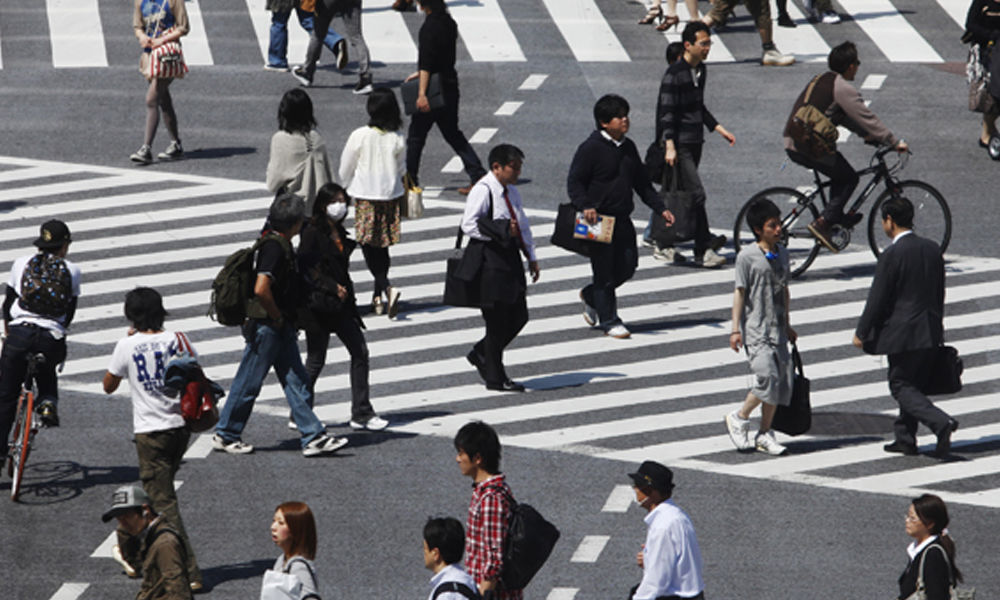Live
- NASA Tracks Five Giant Asteroids on Close Approach to Earth Today
- Pushpa 2 Hits ₹1000 Crore in 6 Days: How It Compares to Other Top Indian Films
- Vivo X200 and X200 Pro Launched in India: Price, Specifications, and Features
- Nitin Gadkari Admits Feeling Embarrassed at Global Summits Over Rising Road Accidents in India
- Comprehensive Review on Indiramma Housing Survey and Welfare Initiatives Conducted via Video Conference
- Jogulamba Temple Records Rs 1.06 Crore Hundi Revenue in 150 Days
- Opposition Slams ‘One Nation, One Election’ Bill as Anti-Democratic; BJP Allies Support the Move
- Celebrate Karthigai Maha Deepam Virtually with Sri Mandir’s LIVE Darshan Experience
- BJP Extends Support to Samagra Shiksha Abhiyan Employees' Strike, Demands Immediate Regularization and Welfare Benefits
- Dr. M. Priyanka Stresses Quality Education, Nutritious Meals, and Cleanliness in Schools
Just In
Nearly 20 areas earmarked for 'enhancing walkability'


Nearly 20 places, including two main railway stations, have been chosen by urban authorities under a new initiative for 'enhancing walkability' in the national capital
New Delhi: Nearly 20 places, including two main railway stations, have been chosen by urban authorities under a new initiative for 'enhancing walkability' in the national capital.
The Delhi Development Authority recently had approved a draft policy for 'enhancing walkability' in the city, which will seek to identify vending zones, removal of encroachment from footpath, ensure plantation of trees for shading, installation of street furniture and signage, among other measures.
"On a pilot basis, several sites shall be taken up under this initiative which include Old Delhi Railway Station, New Delhi Railway Station, Chandni Chowk, ITO Junction, Delhi University (North and South Campuses), all ISBTs, Hauz Khas-IIT Delhi, Nehru Place and Lajpat Nagar," a senior official said.
Other places are Uttam Nagar crossing, Bhikaji Cama Place, Karol Bagh, Saket-Malviya Nagar, Kamla Nagar, Lakshmi Nagar, Sector-21 Metro Station, Dwarka and Adhchini on Aurobindo Marg, he said.
"It was felt that on the basis of 'walkability plan for city of Chennai', Delhi should also take steps in this direction by way of policy intervention and initiatives, wherein features like removal of encroachments from footpath, identifications of vending zones, shaded tree plantation, installation of street furniture and signages are suitably addressed," the DDA said, while approving the draft policy.
The Delhi Development Authority said after various meetings and discussion with civic and urban bodies and the Delhi Metro, a draft policy on the initiative was prepared and it was shared with local bodies - PWD, Delhi Traffic Police and other authorities.
The DDA had also said the draft policy will be placed in public domain for "three weeks for inviting comments" from the people.
The initiative seeks to provide or improve pedestrian infrastructure so that more people walk across the city for leisure or health reasons. "It will include strengthening of existing pedestrian infrastructure in areas where it is ill-maintained or inadequate and development in areas where it is not presently available," the official said.
Provision of barrier-free footpaths and creation of a continuous pedestrian network as per principles of universal design, including integration with existing public places, parks, green areas and open spaces will also be part of the initiative.
Pelican crossings near schools and other major pedestrian crossings which cater to children, elderly and infirm and street furniture such as benches and other seating facilities, garbage receptacles, signages giving information regarding directions, location of various public utilities will also be provided, officials said.
But experts said each city has a different climate and cultural imprints and therefore policies in Delhi would need to be worked out accordingly.
Delhi-based conservation architect Aishwarya Tipnis, said, "It is always promising to see the government taking initiatives like this. The success would really depend on the involvement and engagement of the local community and stakeholders in the process."
Mumbai-based urban conservationist Kamalika Bose also agreed that climate is one major element that needs to be factored in before designing the policy. "Delhi gets extreme cold, extreme summer and a lot of rain.
So, it is important these pedestrian facilities address the problems faced by people either when they are walking for leisure, say for shopping or commuting from one transport facility, to another," she said.
Bose said policy interventions are always welcomed, but more than that a "change in psyche" is needed to achieve success in such projects. "So, a place like Amsterdam, the capital city of the Netherlands, not only is pedestrian-friendly, but also people take pride in walking or using eco-friendly conveyances like a bicycle.
Also, incentivising walking has to be complemented with de-incentivising use of cars, wherever possible," she said.
"Many people in India equate car as a status symbol and therefore take less to walking or using public transport. That attitude also needs to change to create a pedestrian-friendly city," she said.

© 2024 Hyderabad Media House Limited/The Hans India. All rights reserved. Powered by hocalwire.com






